Top 5 Classic Gardens in Suzhou
Suzhou is a city of gardens. The first garden can be traced back to the 6th century BC. The private gardens reached their zenith in the Ming (1368–1644) and Qing (1644–1911) dynasties, with about 200 gardens being scattered around the city.
Today, there are 69 preserved gardens in Suzhou, nine of which have been designated as UNESCO World Heritage Sites. Here, we would like to introduce the top five gardens.
1. Humble Administrator's Garden — Suzhou's Largest Garden
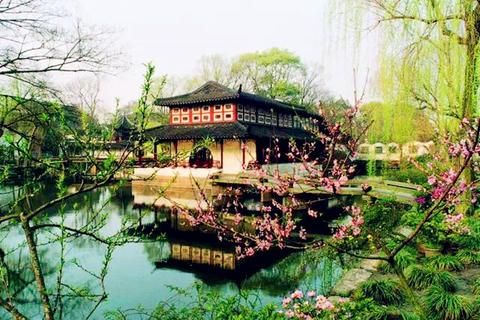
Covering an area of 5.6 hectares (13.8 acres), the Humble Administrator's Garden (拙政园) is the largest garden in Suzhou and recognized as one of the four most famous gardens in China.
This garden was constructed in 1509 during the Ming Dynasty. It is a masterpiece of the Ming Dynasty's garden landscaping.
The garden is divided into three major parts: the eastern part, central part, and western part. The Central Section is the main and elite part of the garden.
It is outstanding for its smart use of ponds, interconnected via narrow streams that flow underneath charming bridges. Numerous pavilions, corridors, rockeries, and ancient trees are dotted across the garden, creating a relaxing, harmonious atmosphere.
Location: 178 Northeast Street, Suzhou City
Area: 5.6 hectares (13.8 acres)
Time needed: 2–3 hours
Ticket: 70 yuan (Apr 16–Oct 30); 50 yuan (Oct 31–Apr 15)
Features: a maze of connected pools, numerous pavilions and bridges
2. Lingering Garden — Famous for Its Striking Architecture
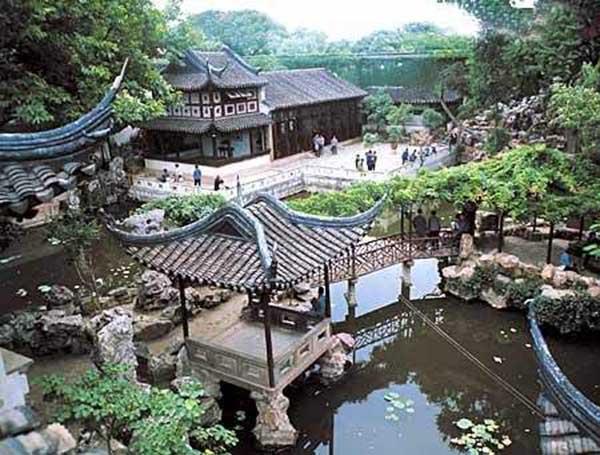
Lingering Garden (留园) is one of the best preserved gardens in Suzhou, and praised as one of China's four famous gardens, along with the Humble Administrator's Garden, the Summer Palace in Beijing, and Chengde Summer Palace.
Originally built in the Ming Dynasty and improved to its present layout in the Qing Dynasty, Lingering Garden is a classic example of the Qing Dynasty's garden landscaping.
This garden is famous for its striking architecture. It has the most buildings among Suzhou's gardens, perfectly combined corridors, artificial hills, rocks, and water features.
The garden is divided into four distinctly themed areas: artificial hills in the west, pastoral scenery in the north, halls and pavilion structures in the east, and hills and water features at the center.
Location: 338 Liu Yuan Road, Jin Chang District
Area: 2.3 hectares (5.6 acres)
Time needed: 1½–2 hours
Ticket: 55 yuan (Jan, Feb, Mar, Jun, Nov, and Dec); 45 yuan (Apr, May, Jul, Aug, Sep, and Oct)
Features: striking architecture, remarkable rock structures
3. Master of the Nets Garden — Suzhou's Smallest Garden
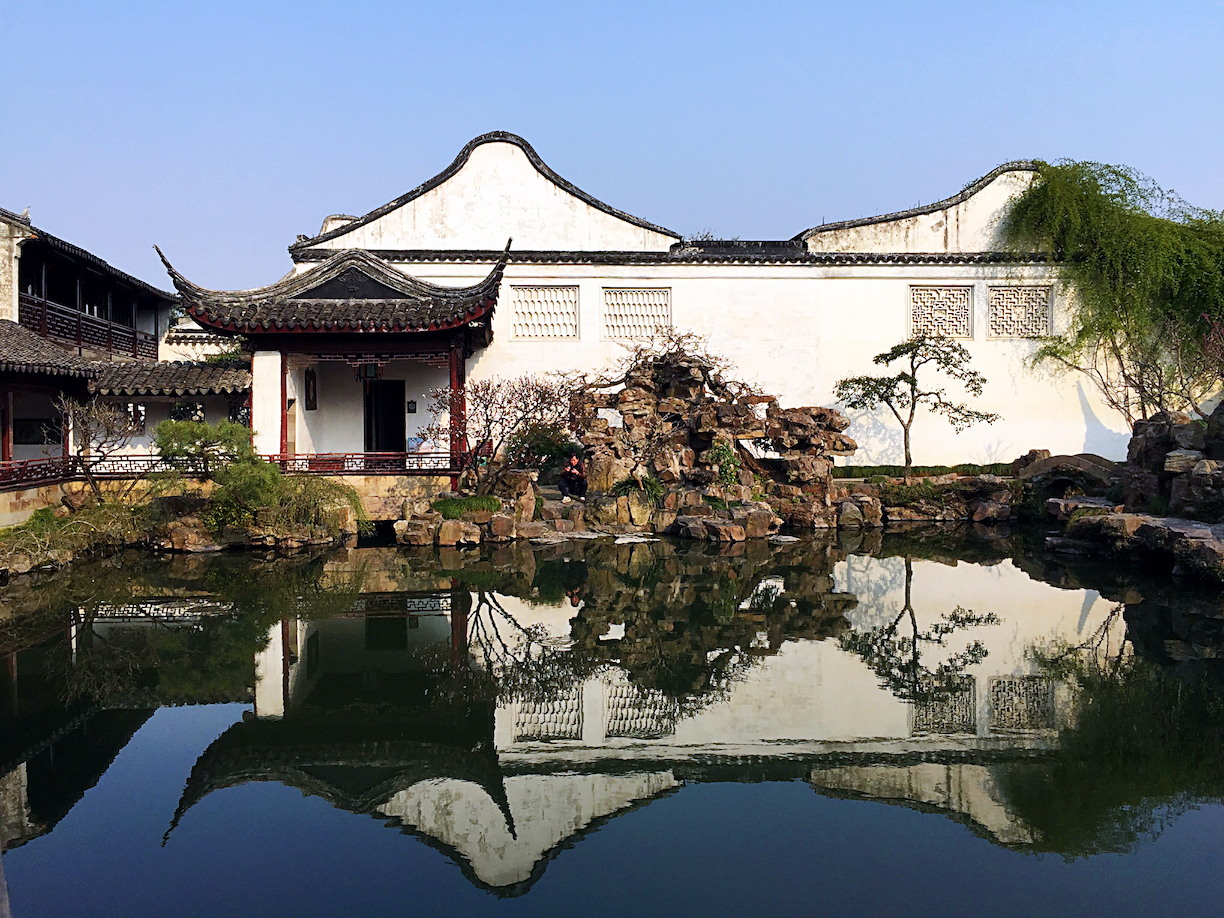
Built in 1180 during the Southern Song Dynasty, the Master of the Nets Garden (网师园) is the smallest (smaller than one ninth the size of the Humble Administrator's Garden) yet the most delicate landscape garden in Suzhou City.
This garden consists of a residential quarter and the garden proper. At each turn, there is an elegant picture of pavilions, rocks, trees, and water.
It reflects the wisdom of the ancient landscape architects who perfectly combined the techniques of relative dimension, contrast, sequence, and depth, as well as borrowed scenery.
This garden is also open to the public in the evenings from March to November. You can not only see the garden itself but can also appreciate a series of cultural displays from opera-style singing to the playing of traditional Chinese musical instruments.
Location: 11 Kuo Jia Tou Xiang, Dai Cheng Qiao Road, Gusu District
Area: 0.6 hectares (1.5 acres)
Time needed: 1–1½ hours
Ticket: 40 yuan (Apr–May, Jul–Oct); 30 yuan (Jan–Mar, Jun, Nov–Dec)
Features: a delicate landscape garden with many design techniques, a series of cultural displays
4. Lion Grove Garden — Dominated by Elaborate Rock Formations
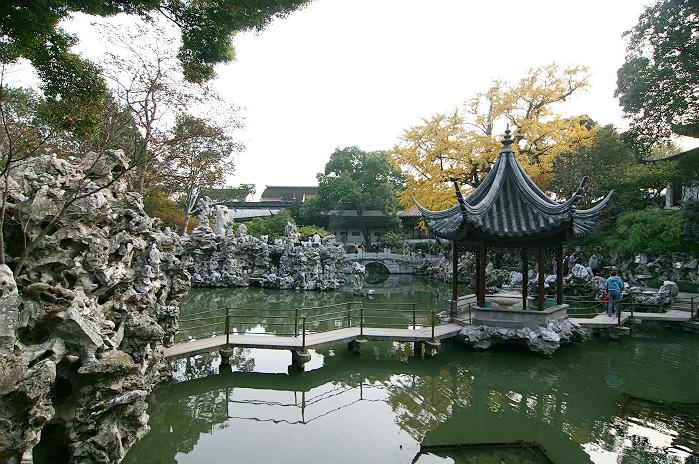
Built in 1342 during the Yuan Dynasty, Lion Grove Garden (狮子林) is a representative garden of the Yuan Dynasty.
This garden is dominated by elaborate rock formations of all shapes and sizes, which give this garden quite a different appearance to the other gardens. There are many rockeries in the shape of a lion, hence the name Lion Grove.
Apart from rocks, it has richly ornamental pavilions and towers in different styles, each having its own history and story.
Location: 23 Yuanlin Road, Suzhou City
Area: 2.5 hectares (6.2 acres)
Time needed: 2 hours
Ticket: 40 yuan (Apr–May, Jul–Oct); 30 yuan (Jan–Mar, Jun, Nov–Dec)
Features: a large and labyrinthine grotto of rocks
5. Canglang Pavilion — the Oldest Garden in Suzhou
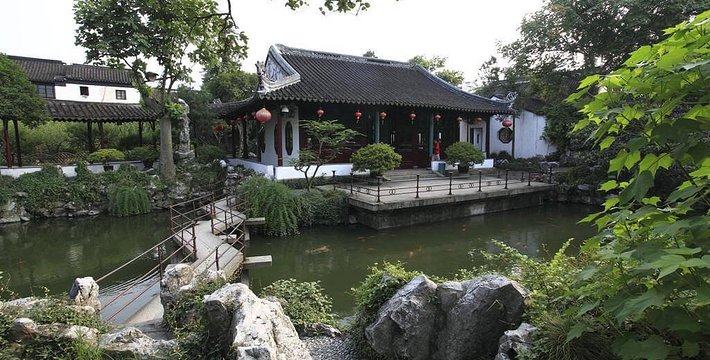
Canglang Pavilion or Surging Waves Pavilion (沧浪亭) is a classical garden built in 1044 during the Song Dynasty. It is the oldest among the existing classical gardens in Suzhou, keeping its original Song Dynasty layout.
Different from Suzhou’s other gardens, which are usually surrounded by a high wall, Canglang Pavilion is situated by the side of a lake to its north and faces a miniature mountain to its south.
The garden itself is small and peaceful with fewer tourists compared with other more famous gardens in the city.
Location: 3 Canglangting Street, Suzhou City
Area: 1.1 hectares (2.7 acres)
Time needed: 1–1½ hours
Ticket: 20 yuan (Apr 16–Oct 30); 15 yuan (Oct 31–Apr 15)
Features: a perfect combination of architecture and nature
